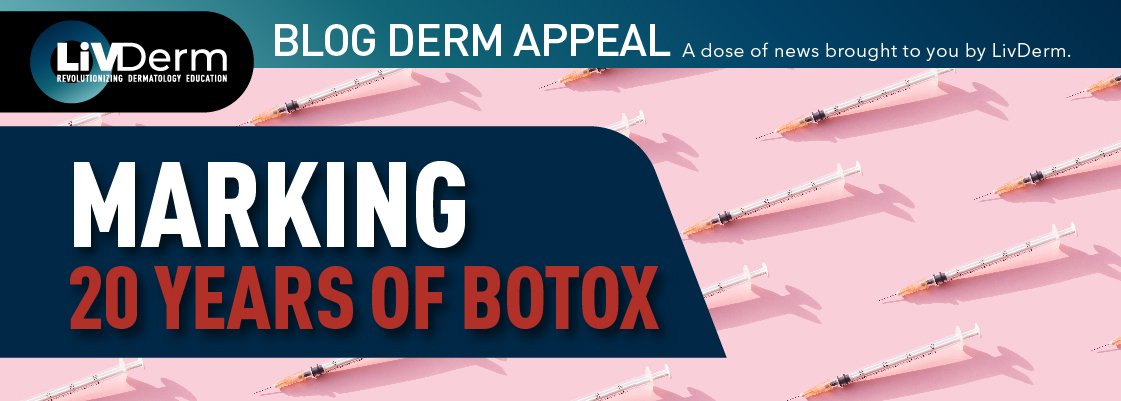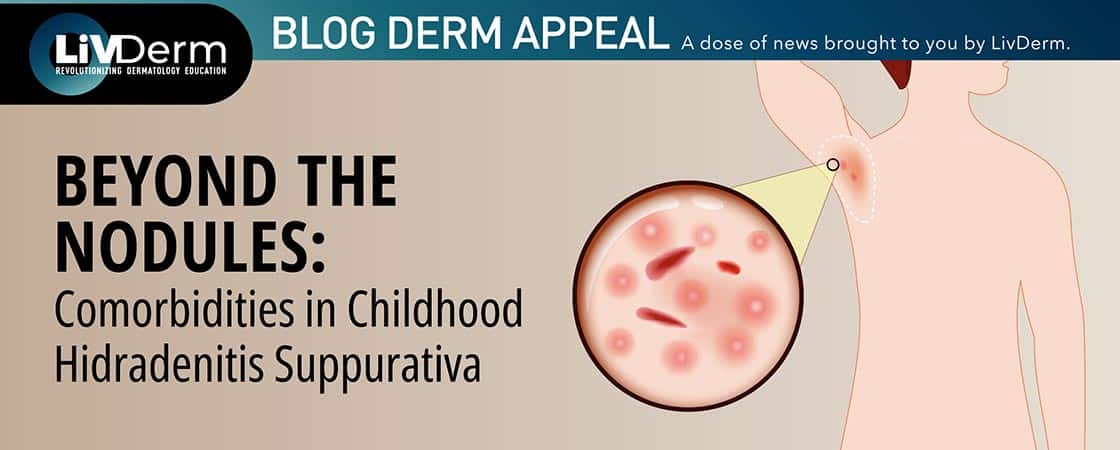April 15, 2022, marked 20 years since Botox was approved by the U.S. Food and Drug Administration (FDA) to help temporarily reduce the appearance of the glabellar lines between the eyebrows. The remarkable journey of this neurotoxin has seen much growth and development, paving the way for substantial medical advancements. Today a household name, Botox has become more than just an aesthetic innovation to reduce the appearance of facial wrinkles; it is also used to treat medical conditions such as chronic migraines, muscle spasms, and overactive bladder, to name a few. To recognize 20 years of Botox, LiVDerm takes a look at its history as a groundbreaking drug in both medical and aesthetic medicine.
A brief background
The story behind Botox is an interesting one, finding its origins as far back as 1895 when Belgian scientist Emile van Ermengem discovered clostridium botulinum, the bacteria that causes botulism. Twenty years later, researcher Dr. Edward Schantz was able to purify the botulinum, opening avenues for further scientific research and exploration. It was due to this discovery that researcher Alan B. Scott, MD, in his quest to find a treatment for strabismus (cross-eye), found that the neurotoxin worked in relaxing the eye muscles, thus providing a significant breakthrough in medical science. This discovery was a huge indication as to the therapeutic capabilities of botulinum. Dr. Scott named his discovery oculinum and later sold it to the large drug manufacturer Allergan who gave it the name we all know today: Botox.
Botox as a cosmetic procedure
Ophthalmologist Jean Carruthers, MD, is widely known for helping to pioneer the use of Botox for its cosmetic use in treating facial wrinkles. Whilst treating a patient with blepharospasm (eyelid spasms), Dr. Carruthers found that her patient began presenting with fewer brow wrinkles. This observation led to more experimentation on both herself and her patients to prove that Botox could safely be used for temporarily reducing the appearance of wrinkles. It would be much later that she and her husband would go on to publish their first scientific paper detailing their findings. As more researchers and medical professionals caught on to this breakthrough anti-aging effect, it was only a matter of time before the use of Botox in cosmetic procedures became prevalent.
More than just aesthetics
Although Botox has been providing temporary smoothing of frown lines, crow’s feet, and forehead lines for 20 years now, it’s important to highlight its far more wide-ranging and beneficial use in the medical field. One such well-known treatment is for those who suffer from chronic migraines. It is believed that Botox acts as a roadblock, inhibiting pain-carrying neurotransmitters coming from the brain, effectively stopping them before they reach the nerve endings. In much the same way, it is used to treat cervical dystonia (a painful involuntary contraction of neck muscles) as, again, it acts as a blockage to the nerves that are told to contract. Botox is also now FDA-approved to treat other conditions such as overactive bladder, spasticity, chronic sialorrhea (drooling), glabellar lines (the frown lines between eyebrows), and more. It is the paralytic nature of Botox that makes it a preferred treatment for such spasmic muscle-related conditions.
What lies ahead?
Following the considerable success of Botox in treating various ailments and conditions, it comes as no surprise that there continues to be a plethora of investigative research into what more this drug can do. Aside from the pain relief offered by Botox for chronic migraine sufferers or the spasmic relief from conditions such as cervical dystonia or blepharospasm, Botox is entering into new territory with some more therapeutic uses. Studies have begun into the use of Botox for depression; although it is still unclear how exactly Botox can help, it is believed it has to do with what has been termed the ‘facial feedback’ mechanism. It simply means that blocking the muscles that cause frowning may lead to improved mood.
Other studies are underway for patients who have undergone open-heart surgery, of which a common side effect is atrial fibrillation. It is hypothesized that Botox can help prevent this from occurring. In other instances, it is being studied as a means of reducing the sexual discomfort felt by some women during vaginal sex and even to help prevent premature ejaculation in men. Cosmetically, there continues to be research into the use of Botox injections in the scalp to help keep the hair clean for longer periods of time, as well as in the treatment of certain types of acne.
Key takeaway
Although Botox has been around for a long time now, it does not show any signs of slowing its ever-expanding catalog of uses. Furthermore, due to the high demand for anti-aging cosmetic products and fierce competition in the industry, Botox’s success inspires other manufacturers to strive for improved neurotoxin formulas and longer-lasting treatments.
Sources:
- https://www.drugs.com/medical-answers/botulinum-toxin-treat-3473754/
- https://www.webmd.com/migraines-headaches/botox-migraines
- https://www.allinahealth.org/healthysetgo/heal/botox-treatment-for-overactive-bladder
- https://carrutherscosmetic.com/about/meet-dr-jean/
- https://www.zwivel.com/blog/botox-history/
- https://www.healthline.com/health/botox-for-depression
- https://www.botoxcosmetic.com/what-is-botox-cosmetic/celebrating-20-years-of-botox-cosmetic

















